10 Great Alternatives to Hyped Bourbons
Photos via Heaven Hill, Brown-Forman, Jim Beam, Wild Turkey, Buffalo Trace, Maker's Mark, Belle Meade, High West, WhistlePig Drink Features whiskey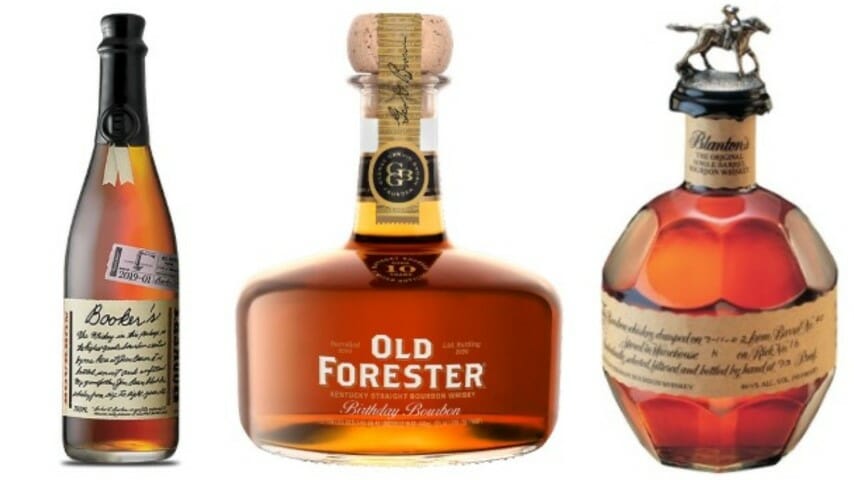
Cocktail Queries is a Paste series that examines and answers basic, common questions that drinkers may have about mixed drinks, cocktails and spirits. Check out every entry in the series to date.
It’s entirely too easy these days, when it comes to spirits writing about bourbon in particular, to focus almost entirely on what the average consumer is never able to acquire. So many brands have had their prices inflated and seen corresponding drops in availability during the brown liquor craze, and the discourse found in online forums and Facebook groups in particular has a tendency to revolve disproportionately around only a small handful of brands, building a self-perpetuating hype cycle that convinces new drinkers that only a small number of brands represent “the good stuff.” It’s a phenomenon that has resulted in price gouging on hyped bourbons from retailers becoming the norm, as package stores are all too happy to mark up a bottle of bourbon 400% from MSRP if there are people out there desperate enough to pay it.
But that’s all stuff I’ve written about before. In a market where hype drives unreasonable pricing and frustrating scarcity, the most valuable question to actually ask and answer is “So what should I be drinking instead?” If you can’t find the hyped stuff, like most of us, what are your best alternatives that are easier to track down? If you don’t care to be dropping three or four figures on whiskey bottles, what are the best value plays to capture those same flavor profiles?
That’s the purpose of this piece. In each entry here, I’ll cite a hyped bourbon that is currently difficult to obtain (or subject to constant price gouging), and suggest an easier found alternative that you’ll probably enjoy just as much.
Note: I’ve tried to ensure that I’m providing recommendations from an array of different distilleries, but the sheer hype surrounding Buffalo Trace products in particular means they’ll inevitably be well represented here. It’s simply the consequence of their products being so hotly desired.
1. W.L. WellerThe alternative: Larceny
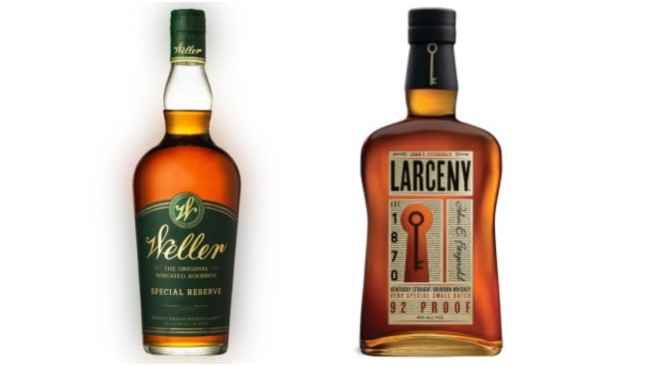
The not-so-secret background of W.L. Weller is that it shares the same wheated bourbon mashbill as Buffalo Trace’s coveted Pappy Van Winkle series, which made brands like W.L. Weller 12 Year (which we recently reviewed once again) one of the first to benefit from the miasma of hype that spread out in every direction from Pappy in the last decade. That sudden surge in interest took a series of high-value bottles and turned them into whales overnight—there’s nothing wrong with the W.L. Weller lineup, but it does nothing to justify the fact that people are paying $300 for bottles of W.L. Weller 12 Year on the secondary market when I bought one for around $25 only seven years ago. It extends to the entire lineup, too—even the flagship W.L. Weller Special Reserve is going for $100 or more in many price-gouging package stores.
Heaven Hill’s Larceny, on the other hand, is a similarly wheated, non-age-stated bourbon with no such availability issues. Despite the lack of an age statement, it likely has a higher average age than the W.L. Weller Special Reserve, and a slightly higher proof. Both pack classic wheated bourbon flavor notes of sweet vanilla, caramel, stone fruit and biscuits, but the Larceny will set you back $20-25, rather than $100. It’s about as clear a comparison as you can make between two products with almost identical statistics but vastly different price points thanks to hype and hype alone—not to mention the fact that head to head tastings often suggest that Larceny is every bit as good.
2. Pappy Van WinkleThe alternative: Maker’s Mark Private Selection
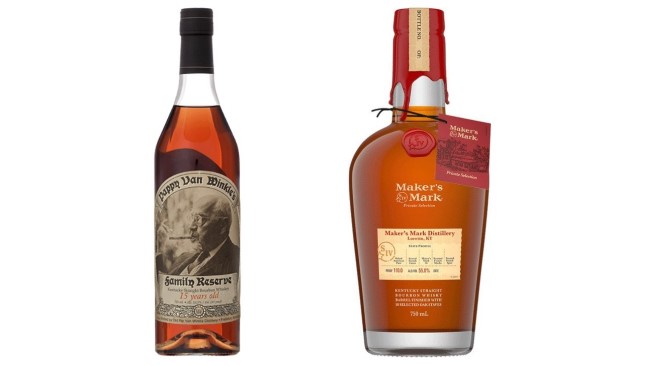
Might as well follow up W.L. Weller by addressing its big brother, right? The Pappy Van Winkle lineup is the elephant in the room in any conversation about hyped bourbon. Made from the same wheated bourbon mashbill as those Wellers, it barely needs any introduction at this point. Perhaps you’ve seen a bottle sitting behind glass in a liquor store for $1,000 or more. Maybe your local bar has some in a strongbox, to be brought out for finance bro birthday parties. It doesn’t really matter; the brand can barely be said to be relevant to the average drinker thanks to the impossibility of getting it and the prohibitive price attached to it. Suffice to say, it’s a line of well-aged wheated bourbons favored by those who enjoy the soft and sweet flavor profile typical to that style.
If what you want is a top-tier wheated bourbon with no shortage of flavor, though, you’re in luck—Maker’s Mark has several that fit the bill, and they’re all excellent values. You could grab the regular Maker’s Mark Cask Strength for just over $50, but you’re even better off dropping an extra $10 on the Private Selection series, which takes the already delicious, cask-strength Maker’s profile and amps it up with additional aging on a variety of proprietary barrel staves. In fact, you’re likely to find this whiskey considerably more vivacious and flavor-packed than the relatively low proof likes of Pappy Van Winkle, if we’re being honest. It can’t compete with the Pappy in terms of big age statements, but it really doesn’t need one.
3. Booker’s BourbonThe alternative: Knob Creek Single Barrel Select
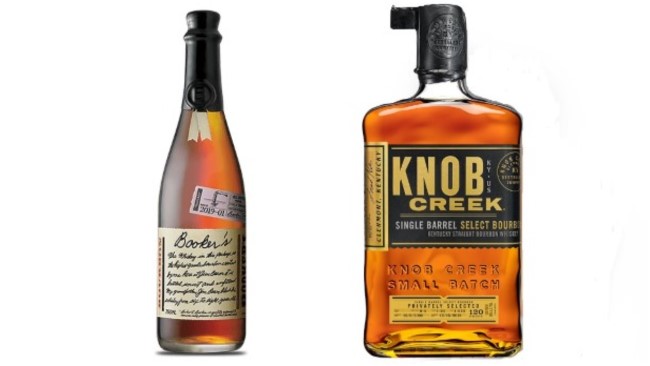
Booker’s certainly isn’t as hard to find as some of these other bourbons, partially because Jim Beam possesses the capacity to produce it in fairly large quantities, but mostly because for a lot of bourbon geeks it has sort of priced itself out of the conversation in recent years. Beam is a distillery that is known for value across its whole lineup, and it has no shortage of great value options. In fact, Beam even has great, well-aged, overproof bourbon options at solid values, which begs the question of why you would pay $90 for Booker’s when the same company offers very similar products at a much more attractive price point.
Case in point: Knob Creek Single Barrel Reserve or Select, which have become an even better deal since the flagship Knob Creek regained its 9-year age statement this year. That makes even the standard Knob Creek Single Barrel Reserve considerably more mature than the 6-8 years common for Booker’s, and with a proof of 120 they’re only slightly less potent than the typical cask strength of Booker’s as well. All that, and a price under $50!
In reality, though, single barrels from Knob Creek become an even better deal in the form of store picks, which are typically older than 9 years and may be as old as 13, 14 or 15 years, with the same 120 proof. It’s just hard to make a case for Booker’s at $90, when you can often find these for $45.
4. Old Forester Birthday BourbonThe alternative: Old Forester 1920 Prohibition Style
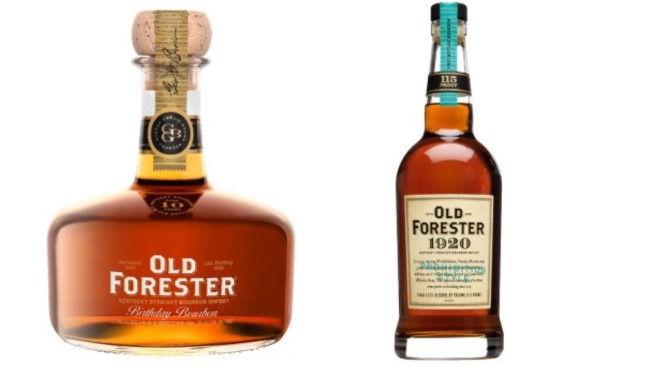
This is less a knock on Birthday Bourbon, given that most of the batches are wonderful, and more an affirmation that Old Forester 1920 is consistently one of the best American bourbons on the shelf, and it isn’t too hard to find.
Birthday Bourbon is a yearly release that reflects the range of profiles you find within Brown-Forman’s Old Forester brand—I find that sometimes it plays up the “bananas foster” notes that their bourbon is known for, while other years are much more red fruity or spice-driven. It’s always fun to taste, but the MSRP of $130 is pretty steep—and you’re more likely to find it for $500 or $600 from a price gouging retailer marking it up to secondary market prices.
Old Forester 1920, on the other hand? It doesn’t sport a fancy age statement, but neither do most Old Forester brands. It can claim to be extremely full flavored thanks to its 115 proof, and its taste profile is like a synthesis of everything you might like about Brown-Forman bourbons: Rich, sweet, fruity, spicy, it’s got it all. And the price tag is $60!
As someone who has had both of these bourbons many times, I can tell you that Old Forester 1920 will give you almost everything you’re hoping to find in a bottle of Birthday Bourbon.
5. Blanton’s Single BarrelThe alternative: Buffalo Trace Bourbon
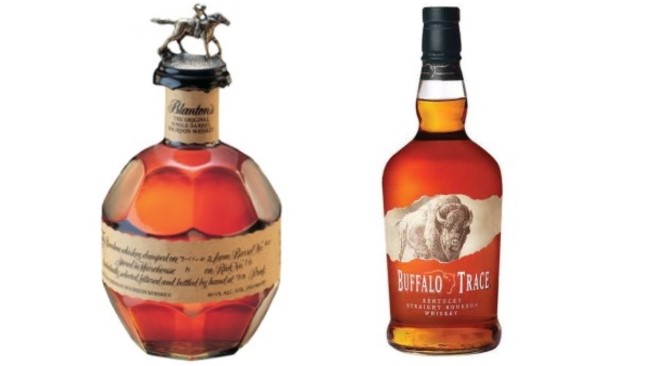
I was tempted to write in “practically anything” as an alternative to the prices that have been normalized for Blanton’s in the current whiskey marketplace, but I’ll refrain from getting that snarky about it. Instead, let me put in a good word for one of the few products Buffalo Trace produces that is still fairly easy to find, in the form of their flagship bourbon.
Blanton’s is a strange beast, and a clear case of rampant hype setting unrealistic expectations and pricing in the market. It was the first single barrel bourbon brand to hit the market, and its core stats are unremarkable: 6-8 years old, 93 proof. A very standard bourbon, made from Buffalo Trace’s “#2,” slightly higher rye mash bill. However, the cult that formed around Blanton’s, thanks to its beautiful bottle and superlative marketing, means that this product with a $60 MSRP is often sold by price-gouging retailers for $200 or more in 2020. Suffice to say, there’s just nothing about Blanton’s specifically that justifies that kind of pricing. It’s a fine whiskey, but you’re being robbed if you pay those kinds of prices for it.
The flagship Buffalo Trace, on the other hand, has also gotten somewhat harder to find thanks to the mania surrounding the distillery, but it’s still relatively plentiful and often available for prices under $30. For that, you get a bourbon with a similar, possibly older average age than Blanton’s, and a similar proof to boot. It’s made from a slightly different mashbill, but it has all the beautiful Buffalo Trace hallmarks regardless—rich vanilla, caramel, cherry, etc. In a blind tasting, you’d never think that one of the two glasses was selling for $200, while the other was selling for $30.
6. Willett Family Estate Bottled BourbonThe alternative: Wild Turkey Rare Breed
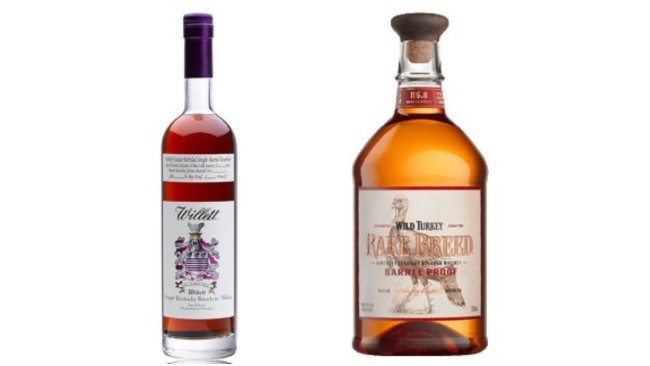
The Willett brand initially built its hype by sourcing and selling exceptionally aged bourbons, many of which went on to become collector’s items that sell for thousands of dollars. Their own distilling operation is considerably younger, but via the Willett Family Estate Bottled Bourbon series they made the interesting choice of essentially trying to replicate those sourced bottles with their own distillate. This has resulted in selling 6-year-old bottles of cask strength bourbon for $120 or more, with secondary prices going hundreds of dollars higher. Suffice to say, it’s a level of inflation and price gouging that Willett’s own distillate hasn’t really earned—rather, those purple-topped bourbon bottles benefitted from the hype of the whiskey Willett previously sourced.
This is all the more clear when you look at some of the other brands that are now distilled and aged entirely at Willett, such as Old Bardstown. You can get decently aged, 100 proof Old Bardstown for pennies on the dollar, despite the fact that the distillate is very similar to those purple-topped bottles of WIllett Family Estate. If what you really want is to properly sample the whiskey that Willett is making, the Old Bardstown brand is the most sensible way to do it.
If what you want is an unmistakably great value in cask strength bourbon, on the other hand, Wild Turkey Rare Breed is always there waiting for you. Year in and year out, this gem of the Wild Turkey lineup is available for around $50, and it’s considerably more mature than anything Willett has been able to put out, being a blend of 6 to 12-year-old bourbons that typically weigh in around 115 proof. It’s massively flavorful, utterly delicious, and remains one of the best pure values in all of whiskey.
7. George T. StaggThe alternative: Elijah Craig Barrel Proof
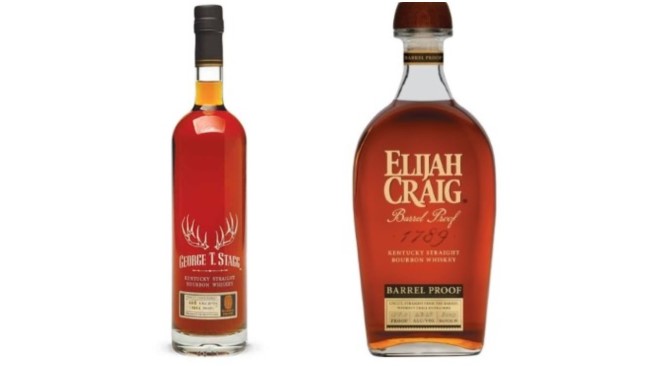
George T. Stagg is one of the unicorns of the annual Buffalo Trace Antique Collection, coveted above all others except for the yearly release of William Larue Weller. This is a knock-your-socks-off, well-aged (15 years), cask-strength bourbon that strides in with in-your-face flavors and a take-no-prisoners attitude. It’s also just about impossible to find outside of the secondary market, where greed and price gouging can put it at $500-700 and beyond. Suffice to say, the best opportunity for getting to try something like this is knowing a friend who wins a package store lottery, or finding it at a bar and ponying up the cost for a pour.
That’s all well and good, but for the rank and file bourbon drinker there’s quite a few other cask strength options out there, and some other well-aged examples that won’t break the bank or require a second mortgage. Some will no doubt suggest Buffalo Trace’s own Stagg Jr. as an alternative, but it’s often just as hard to find (and price inflated) as its big brother. You’re far better off with the regularity and reliable excellence of Heaven Hill’s Elijah Craig Barrel Proof, which can still reliably be found for $60-70 after each release every four months.
ECBP is a model of consistency, being a 12-year-old bourbon that usually rings in between 120-135 proof, bringing all the same intensity of flavor you’d be expecting from something with “Stagg” in the title. The fact that it releases three times a year makes it much easier to come by, and practically every batch is exceptional in its own way. In fact, check out our tasting of all three 2020 batches here, and then go get some for yourself.
8. Kentucky Owl BourbonThe alternative: Belle Meade Cask Strength Reserve

Kentucky Owl does one thing, and they do it well—buying excellent, well-aged bourbon from MGP of Indiana and presenting it at cask strength. There’s not really any denying the quality of the results they’ve put out, and some of the Kentucky Owl batches we’ve sampled in the last few years have been among our favorite whiskey releases. With that said, however, Kentucky Owl batches are quite small and pretty hard to come by, and they carry extreme price tags. An MSRP of around $300 for a bottle of bourbon is just really, really hard for most people to justify, and that’s not even getting into the secondary market pricing.
Thankfully, though, there’s a LOT of places to get great MGP bourbon in the marketplace, because they provide it to so many other distillers and non-distilling producers (NDPs). You can find some of the same whiskey in bottles from the likes of Smooth Ambler, Barrell, Old Carter, and now from MGP’s own George Remus lineup. It’s harder to match the exact combination of age statement and proof point as most of the Kentucky Owl releases, but one that comes particularly close is Belle Meade Cask Strength Reserve.
Like the Kentucky Owl, this is sourced from MGP, and it has a pretty solid average age considering it’s a blend of 7 to 11-year-old high-rye bourbons. It likewise has the overproof punch to be very full flavored, while its lower profile keeps the price tag in the $60-70 range, which is extremely reasonable. In terms of value for MGP bourbon, this can’t really be beat.
9. Elmer T. LeeThe alternative: Russell’s Reserve Single Barrel
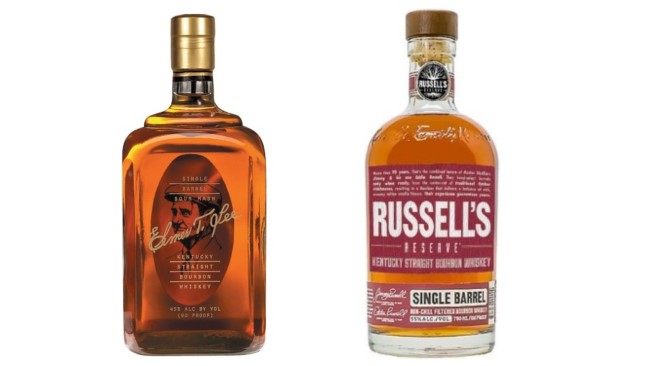
Elmer T. Lee is made from the same Buffalo Trace mash bill “#2” as Blanton’s, and indeed on paper these brands are extremely similar. They’re both aged for moderate amounts of time, have similar (relatively lower) proof points, and are heavily hyped. They’re aged in different types of warehouses, but it’s still hard to make a case for Elmer T. Lee as a single barrel bourbon that should command a price even higher than Blanton’s. And yet, thanks to the fact that it’s produced in smaller quantities, Elmer T. Lee regularly sells on the secondary or at price-gouging retailers for $350 and beyond, which is just absurd for a bourbon with a $40 MSRP.
In the spirit of trying a new single barrel bourbon you’re likely to enjoy even more, then, allow me to point you in the direction of Russell’s Reserve Single Barrel Bourbon from Wild Turkey. The Russell’s Reserve line of bourbons is a subtle branching off from the core Wild Turkey lineup, often bringing slightly rounder and more subtle flavors to the mix, although in this case the 110 proof Russell’s Reserve Single Barrel is a certifiable flavor monster in its own right. It’s both more mature and more assertive than the Elmer T. Lee, and you’ll find it on shelves for $60 or less. What’s not to like?
10. Michter’s 10 Year RyeThe alternatives: High West Rendezvous Rye, Pikesville Rye, WhistlePig Rye

I know this is a bourbon list, but I’ve got to at least mention rye whiskey, right? Of all the hyped ryes out there, the one I often find most difficult to accept the fervor for is Michter’s 10 Year Kentucky Straight Rye. Here in my home in Virginia in particular, I have watched people lose their minds for the opportunity to buy this bottle of 10 year old, 93 proof rye for $170 from the state-run liquor stores … which is actually not bad, in comparison with the $300 or more this brand is being priced at from many price gouging online package stores. That pricing, however, is ludicrous—10 years is a decent age statement for rye whiskey, but it doesn’t justify those crazy prices, especially considering the proof point. Here then are three alternatives that each will work just fine as a replacement.
If you specifically want to keep the mid-90s proof point, High West Rendezvous Rye is a delicious blend of MGP rye and their own distillate, at 92 proof, and it can often be found for less than $70. It’s versatile and complex; an easy rye for neat drinking in particular.
If you want something a bit bolder, Heaven Hill’s Pikesville Rye is essentially a grown-up version of their budget-friendly Rittenhouse, with a commanding 110 proof point and a few more years of aging behind it. In terms of assertiveness of flavor, the Michter’s 10 simply can’t compete with this, making Pikesville an ideal cocktail rye when you want the whiskey to shine through.
And if you really need that 10-year age statement, the flagship WhistlePig rye whiskey has it for you at a price point that is still around $80 from most national retailers … plus a higher strength at 100 proof. All that, and the MSRP is still roughly $70 less. Ultimately, you could buy any two of these other ryes for what one “M10” is going to cost you.
Jim Vorel is a Paste staff writer and resident liquor geek. You can follow him on Twitter for more drink writing.